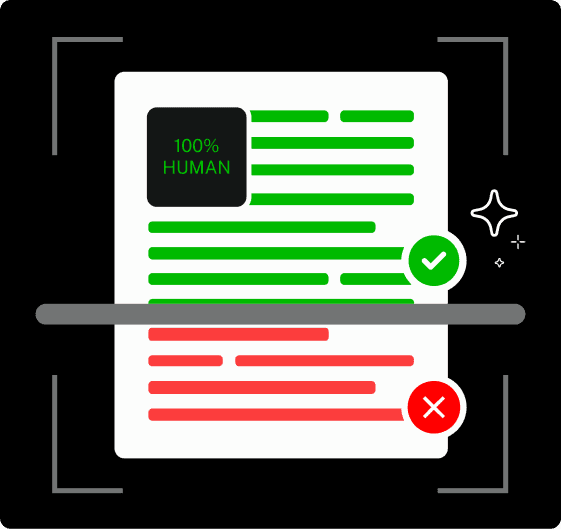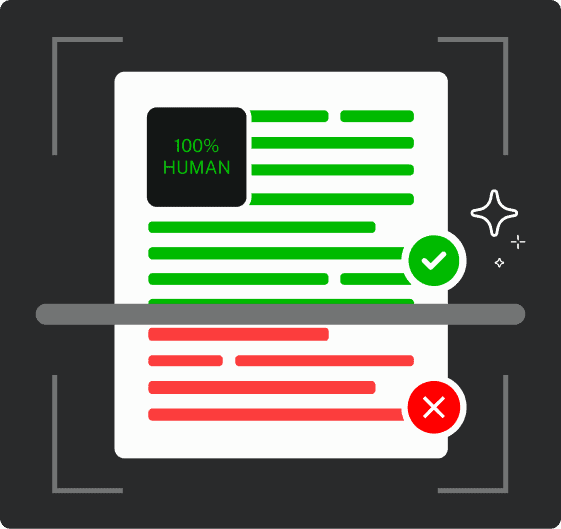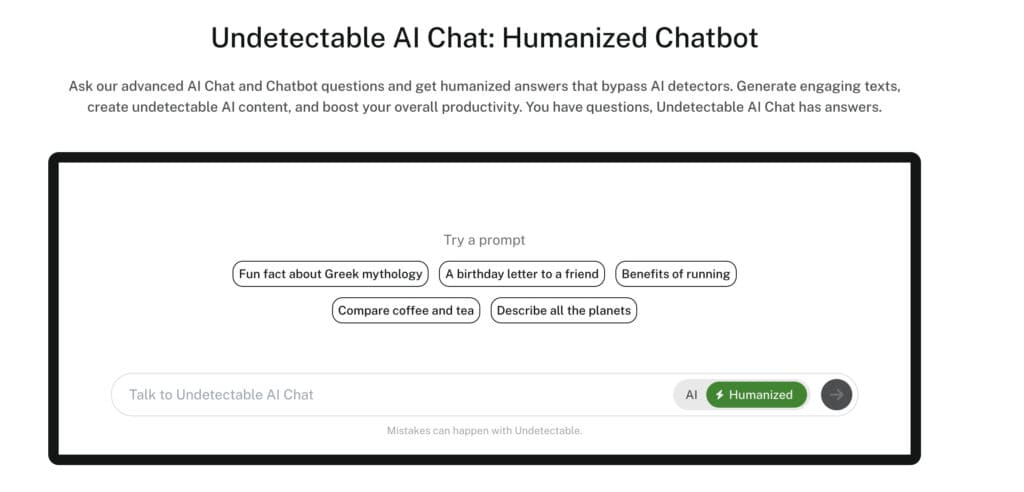With over 1 million words in the English language, it’s safe to say that we’re good at making words up.
But we could also argue, “If that’s the case, then we shouldn’t be using the same visual word for different meanings.”
Yet, we still do.
So, how could a word wind up with so many meanings?
Did the wind change and wind the clock back to when we couldn’t think of new words?
See what happened there? The word wind.
Same spelling, different meanings, different pronunciations—welcome to the world of homographs.
In this guide, we’ll explore what homographs are and how they function and provide plenty of examples to help you identify and use them correctly.
By the end, you’ll not only recognize these tricky word twins but also appreciate the linguistic complexity they bring to English.
What Is a Homograph?
A homograph is a word that shares the same spelling as another word but has a different meaning.
The term “homograph” comes from the Greek words “homos” (same) and “graphein” (to write).
In simple terms, homographs look identical on the page, but they aren’t the same word.


Never Worry About AI Detecting Your Texts Again. Undetectable AI Can Help You:
- Make your AI assisted writing appear human-like.
- Bypass all major AI detection tools with just one click.
- Use AI safely and confidently in school and work.
What makes homographs particularly interesting is that they may or may not be pronounced the same way.
Some homographs sound different despite their identical spelling, while others share both spelling and pronunciation but differ completely in meaning.
For example:
- The lead in a pencil versus taking the lead in a race
- A tear in your eye versus a tear in your shirt
- Wind blowing through trees versus wind up a clock
- A bat flying in a cave versus picking up a bat to play baseball (a homonym)
Homographs are often confused with homophones (words that sound the same but have different spellings and meanings) and homonyms (words that share spelling or pronunciation but have different meanings).
In fact, homographs are a specific type of homonym, but not all homonyms are homographs.
How Do Homographs Work?
Homographs function in two main ways in the English language.
Let’s break them down to understand the mechanics behind these word doppelgangers.
Words That Have the Same Spelling But Different Pronunciations
These words are known as heteronymic homographs or heteronyms.
They’re spelled identically but pronounced differently, which often leads to reading mistakes.
Context becomes crucial for determining the correct pronunciation, especially in languages with high orthographic depth, like English.
Take the word “bow,” for instance:
- When it means to bend forward (verb) or the front of a ship (noun), it rhymes with “cow.”
- When it refers to a decorative knot or a weapon for shooting arrows, it rhymes with “go.”
The stress pattern often shifts in heteronyms with more than one syllable, changing which syllable receives emphasis:
- PRO-duce (noun: fruits and vegetables)
- pro-DUCE (verb: to make or create)
Words That Have the Same Spelling But Different Meanings
The second type includes words that are both spelled and pronounced the same way but have entirely different meanings.
These are called homographic homonyms.
Consider the word “bank”:
- A financial institution where people deposit money
- The land alongside a river or stream
- To tilt an aircraft when turning
The only way to determine which meaning applies is through context.
This is why homographs can be challenging for language learners and why they occasionally create ambiguity in written text.
Types of Homographs (With Examples)
Let’s examine the two main categories of homographs more closely, with examples to illustrate each type.
1. Homographs With Different Pronunciations & Meanings
These heteronymic homographs showcase how English pronunciation can vary despite identical spelling:
Close
Pronunciation 1: klōz (rhymes with “pose”)
- Meaning 1: To shut or bring together
- Example: Please close the door when you leave.
Pronunciation 2: klōs (rhymes with “rose”)
- Meaning 2: Near in space or time
- Example: She lives close to the beach.
Desert
Pronunciation 1: DEZ-ert (stress on the first syllable)
- Meaning 1: Arid land with little vegetation
- Example: The Sahara Desert covers much of North Africa.
Pronunciation 2: dih-ZURT (stress on the second syllable)
- Meaning 2: To abandon or leave behind
- Example: The soldiers wouldn’t desert their posts during the battle.
Row
Pronunciation 1: rō (like “go”)
- Meaning 1: A line of people or things
- Example: They sat in the front row at the theater.
Pronunciation 2: row (like “cow”)
- Meaning 2: A noisy argument
- Example: The neighbors had a row over the property line.
2. Homographs With the Same Pronunciation but Different Meanings
These homographic homonyms maintain their pronunciation across different uses:
Bat
Meaning 1: A flying mammal
- Example: The bat hung upside down in the cave.
Meaning 2: A piece of sports equipment
- Example: He hit the ball with his wooden bat.
Match
Meaning 1: A small stick used to light fires
- Example: She struck a match to light the candle.
Meaning 2: A contest between opponents
- Example: The soccer match ended in a tie.
Park
Meaning 1: A public green space
- Example: We had a picnic in the park on Sunday.
Meaning 2: To bring a vehicle to a halt
- Example: Please park your car in the designated area.
50+ Common Homographs & Their Meanings (With Sentences)
Below is an extensive list of common homographs you’ll encounter in everyday English.
Each entry includes different meanings and example sentences to illustrate proper usage.
Some have the same pronunciation but different meanings, and others have different pronunciations and meanings.
1. Bear
- To carry or endure: I can’t bear the pain any longer.
- A large mammal: The grizzly bear stood on its hind legs.
2. Bark
- The sound a dog makes: The neighbor’s dog would bark all night.
- The outer covering of a tree: The bark of that tree is rough and textured.
3. Bow
- To bend forward: Japanese people bow as a form of greeting.
- A weapon for shooting arrows: The hunter used a bow and arrow.
- A decorative knot: She tied a bow in her daughter’s hair.
4. Bass
- A type of fish: We caught bass at the lake last weekend.
- A low-pitched sound: The bass in that song makes the floor vibrate.
5. Dove
- Past tense of dive: He dove into the pool without hesitation.
- A bird symbolizing peace: A white dove flew overhead.
6. Down
- A lower position: She walked down the stairs.
- Soft feathers: The jacket is filled with goose down.
7. Content
- Satisfaction: She was content after the good news.
- What is contained: The content of the book was educational.
8. Entrance
- A way in: We entered through the side entrance.
- To captivate: The magician’s performance will entrance the audience.
9. Evening
- The end of the day: We’ll meet in the evening around 7 PM.
- Making something level: The evening of the concrete surface took hours.
10. Fine
- Good quality: That’s a fine piece of artwork.
- A penalty payment: He had to pay a fine for speeding.
11. Fly
- To move through air: Birds fly south for winter.
- An insect: There’s a fly buzzing around the room.
- A zipper on pants: Make sure your fly is zipped.
12. Grave
- A burial place: They visited their grandfather’s grave.
- Serious: The situation is grave and requires immediate attention.
13. Invalid
- Not valid: Your ticket is invalid for today’s show.
- A person with disability: The hospital provides special care for invalids.
14. Lead
- To guide: She will lead the hiking group.
- A metal: Lead is a toxic heavy metal.
15. Live
- To be alive: Many species live in the rainforest.
- Happening now: This is a live broadcast.
16. Minute
- 60 seconds: I’ll be ready in a minute.
- Very small: There was a minute difference between the two samples.
17. Object
- A thing: She placed the object on the table.
- To protest: I object to your characterization of events.
18. Present
- Current time: In the present moment, I feel calm.
- A gift: She received many presents for her birthday.
- To show or display: He will present his findings tomorrow.
19. Project
- A planned undertaking: Our school project is due Friday.
- To thrust forward: His voice projects well in the theater.
20. Rebel
- A person who resists authority: The rebel leader organized protests.
- To resist authority: Teenagers often rebel against their parents.
21. Record
- A documented account: The company broke its sales record.
- To document: Please record the meeting minutes.
22. Refuse
- To decline: I refuse to participate in dishonest practices.
- Garbage: The refuse collection comes on Thursdays.
23. Tear
- A drop from the eye: A tear rolled down her cheek.
- To rip: Be careful not to tear the delicate fabric.
24. Wind
- Moving air: The wind blew the leaves across the yard.
- To turn something: Please wind the clock before bed.
25. Use
- To employ: Can I use your phone?
- Purpose: What’s the use of complaining?
26. Does
- Third-person form of “do”: She does her homework every night.
- Female deer: The does grazed peacefully in the meadow.
27. Sow
- To plant seeds: Farmers sow crops in spring.
- Female pig: The sow nursed her piglets.
28. Resume
- To continue: Let’s resume our discussion after lunch.
- A document listing qualifications: His resume impressed the hiring manager.
29. Polish
- To make something shine: She’ll polish the silver tomorrow.
- Relating to Poland: His Polish heritage is important to him.
30. Wound
- An injury: The wound needed stitches.
- Past tense of wind: She wound the yarn into a ball.
31. Compact
- Small and efficient: I prefer a compact car for city driving.
- To press together: The machine will compact the trash.
32. Contract
- A legal agreement: We signed the contract yesterday.
- To become smaller: Muscles contract when you exercise.
33. Convert
- To change form: The app will convert your voice to text.
- A person who changes belief: He’s a convert to Buddhism.
34. Incense
- Aromatic substance burned for scent: The incense filled the room with a sweet smell.
- To make very angry: His remarks incensed the audience.
35. Buffet
- A meal with self-service: The restaurant offers a breakfast buffet.
- To strike repeatedly: The waves buffet the shore during storms.
36. Alternate
- Every other: She works on alternate Saturdays.
- To take turns: The students alternate reading paragraphs aloud.
37. Graduate
- A person who completed studies: She’s a graduate of Harvard.
- To complete studies: He’ll graduate in May.
38. Address
- Location information: What’s your email address?
- To speak to: The president will address the nation tonight.
39. Advocate
- Someone supporting a cause: She’s an advocate for disability rights.
- To support publicly: He advocates for educational reform.
40. Affect
- To influence: How will this decision affect the community?
- Emotion or demeanor: The patient showed a flat affect.
41. Attribute
- A quality or characteristic: Patience is an attribute of good teachers.
- To assign to a cause: They attribute their success to hard work.
42. Conduct
- Behavior: Professional conduct is expected in the workplace.
- To lead or direct: The professor will conduct the research.
43. Console
- To comfort: She tried to console her crying friend.
- A control panel: The sound engineer adjusted settings on the console.
44. Digest
- To process food: It takes time to digest a heavy meal.
- A condensed compilation: I read the reader’s digest version.
45. Elaborate
- Complex or detailed: The palace had elaborate decorations.
- To explain in detail: Could you elaborate on your proposal?
46. Frequent
- Occurring often: She’s a frequent visitor to the museum.
- To visit regularly: Tourists frequent the popular cafe.
47. Increase
- To become larger: Sales increase during the holiday season.
- An amount of growth: We saw a 10% increase in revenue.
48. Permit
- Official document giving permission: You need a permit to build a deck.
- To allow: The rules don’t permit food in the library.
49. Moderate
- Average in amount: Exercise at a moderate intensity.
- To preside over: She’ll moderate the debate.
50. Subject
- A topic: History is my favorite subject.
- To expose to: Don’t subject yourself to unnecessary stress.
- A person under authority: The subjects pledged loyalty to the king.
51. Survey
- To examine comprehensively: We’ll survey the damage after the storm.
- A questionnaire: Please complete this customer satisfaction survey.
How to Identify Homographs in Writing & Speech
Spotting homographs requires attention to context.
Here are some strategies to help you identify them accurately:
- Look for context clues. Surrounding words often indicate which meaning of a homograph is being used, shaping any type of tone in writing.
- Check for function shift. Many homographs function as different parts of speech (noun vs. verb), which helps determine meaning.
- Listen for stress patterns in speech. In heteronymic homographs, syllable emphasis often changes (CON-duct vs. con-DUCT), a phenomenon studied in phonology.
- Note the subject matter. Technical or specialized texts may use particular meanings of homographs.
- Watch for prepositions following the word. Different prepositions often signal different meanings (e.g., object to vs. object of).
When reading aloud, you might need to look ahead in a sentence to determine the correct pronunciation of a homograph before you reach it.
This is a skill that improves with practice and exposure to the language.
How to Use Homographs Correctly in Writing

Using homographs effectively in your writing requires clarity and precision.
Here are some tips:
- Provide sufficient context. Ensure your sentence structure clearly indicates which meaning you intend, which is an essential part of prewriting strategies.
- Use modifiers when necessary. Adjectives or adverbs can help clarify the meaning of a homograph you’re using.
- Be mindful of potential ambiguity. If a sentence could be interpreted multiple ways because of a homograph, rewrite it to improve the reader’s understanding.
- Consider your audience. Non-native speakers might struggle with homographs, so be particularly clear when writing for international audiences.
- Use punctuation strategically. Commas, dashes, and other punctuation marks can help guide readers to the correct interpretation.
Remember that while homographs can create wordplay opportunities in creative writing, clarity should be your priority in professional and academic contexts.
Common Mistakes & How to Avoid Them
Even experienced writers and speakers occasionally stumble over homographs.
Here are common pitfalls and strategies to avoid them:
- Misinterpreting context. Solution: Read the entire sentence or paragraph to gather contextual clues before deciding on the meaning.
- Assuming pronunciation based on more familiar usage. Solution: Check a dictionary if you’re unsure about pronunciation, especially for less common meanings.
- Creating unintentional ambiguity. Solution: Have someone else read your work to catch instances where your intended meaning isn’t clear.
- Confusing homographs with homophones. Solution: Remember that homographs share spelling, while homophones share pronunciation.
- Using the wrong form in idioms. Solution: Learn common expressions containing homographs as complete phrases (e.g., “bear in mind” vs. “bare minimum”).
The more you read and write, the more familiar you’ll become with homographs in various contexts. Don’t be afraid to consult a dictionary when in doubt.
How AI Can Help Identify & Correct Homograph Mistakes
AI tools have become powerful in understanding language context, making them valuable for writing and handling homographs.
They analyze surrounding text to determine the intended meaning and suggest corrections for potential misuse.
For school projects, our Ask AI tool provides detailed explanations of homograph meanings, identifies the correct usage in context, and offers examples to clarify potential ambiguities.

For everything else, AI Chat delivers real-time feedback on homograph usage, suggests clearer alternatives, and explains subtle meaning differences based on writing purpose.

These tools enhance accuracy and clarity but should support, not replace, your understanding of language.
You can also explore our AI Detector and Humanizer in the widget below!
A Path to Clearer Communication
Homographs showcase the complexity of English, proving that identical spellings can carry vastly different meanings.
Mastering them improves both comprehension and expression, making your writing clearer and more precise.
Even native speakers trip over homographs, but awareness and context make all the difference.
For extra support, Undetectable AI tools can help you refine your writing and avoid common pitfalls. Try them today!
